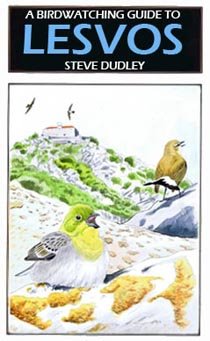In recent years though I’ve been trying to be more ethical in my purchases and trying to reduce my carbon footprint (haven’t we all?). And one of the itches here was the wearing of all those man-made fabrics, high on the use of petrochemicals and other non-eco manufacturing methods.
But what natural alternatives are out there?
Cotton? Nah, been there, worn the t-shirt, got wet. Nope. Not going back. And, its the least environmentally friendly of all the natural fabrics.
Hemp? Whoa! Sack-clothing and non-stop itching. No thanks.
Bamboo? Bamboo?! Are you kidding?
Well, actually, no. In recent years there's been a number of bamboo fibre clothing items introduced, and outdoor clothing is at the forefront of its use.
Bridgedale mens bamboo socks £11.99

A couple of year ago I bought a couple of pairs of Bridgedale bamboo walking socks. They’ve been worn non-stop ever since, nigh on daily, and are still going strong. They’ve been great in all but the hottest of weather, when they do get a little damp (then all my previous socks did too – so no black mark). No, they’re great and I’ll no doubt replace them with the same again – what more recommendation can you give than replacing something with the same again.
What the Bridgedale info claims (from their website):
Mens Bamboo Crew socks by Bridgedale. Bamboo is an excellent natural and renewable fibre with a silky texture that quickly absorbs moisture. It is a naturally anti-microbial and hypoallergenic and grows without the use of chemicals or pesticides. Bamboo benefits the environment by guzzling greenhouse gases storing four times more CO2 than a similar stand of trees while releasing 35 percent more oxygen. Bamboo is a great solution to global climate change!
Impressed with my Bridgedale socks I recently added more bamboo clothing to my wardrobe.
BAM t-shirts £20 each or £60 for four (when I bought them)

First up were four BAM t-shirts. I’d been searching for thin, lightweight summer t-shirts for several years, but nothing cut it for me. They were either too thick or too hot. In spring a friend showed me his BAM t-shirts and I liked the look of them. On checking their website they had a 4-for-the-price-of-3 offer on, so I bought four short-sleeved t-shirts and they haven’t been off my back since! They are simply gorgeous next to the skin – silky soft – you simply forget you’re wearing them. Importantly for me, they are thin enough to wear under a shirt and they are brilliant at wicking so I stay dry and comfortable. They are quite simply the most comfortable t-shirts I’ve ever worn.
What the BAM info claims (from their website):
The most comfortable performance workout T-shirt you'll ever wear is also great for everyday wear. Luxurious, temperature controlled, non smelly, moisture wicking. 70% bamboo, 26% cotton, 4% elastane.
Brasher Natural Short Socks £11.99

So, next up was another pair of socks – a pair of Brasher Natural Short Socks. I added these ankle socks to wear with my trainers and like the Bridgedales, they’re wonderfully comfortable, high-wicking and stay dry in all but the warmest of weather. They have a very thin bridge for the upper foot (for increased ventilation) doubled with a thicker, cushioned sole – the combination is great. They have a strange double cuff, but this is great too, stopping the sock from slipping (something some of my other ankle socks suffer from).
What the Brasher info claims (from their website):
The Natural Short Sock is a lightweight travel or everyday sock made from natural, 100% bamboo fibres. Cross sectional micro fibre to absorb and evaporate perspiration with natural anti-bacterial properties. UV resistant and quick drying, perfect for adventure travel. Mesh construction on top of foot for extra ventilation to keep feet cool and dry in warmer climates. Cushioned sole for enhanced comfort. Lycra support bands in the arch and ankle areas prevent slippage and rotation. Double cuff gently holds the sock in place. Protective Achilles tab. Composition - 81% Bamboo, 13% Nylon, 5% Elastane, 1% Lycra. Available in Grey / Blue
 Tog24 Subi long-sleeved t-shirt £24.99
Tog24 Subi long-sleeved t-shirt £24.99Recently I was bought a Tog 24 Subi long-sleeved t-shirt. Extremely comfortable but, its been too warm to wear for summer use. It feels like it will make a great winter base layer, but out of all my garments, it has the least bamboo composite, being only 50% (mixed with 50% nylon). Time will tell.
What the Tog 24 blirb says (from their website):
A technical mens polo shirt in technical fabric for outstanding levels of performance. With a 50% Polyester, 50% Bamboo Charcoal mix, this t-shirt is quick drying, lightweight, fast wicking and naturally anti-odour. It also helps to protect against harmful UV rays and is easy care. Ideal for a wide range of activities such as walking and hiking. Browse the rest of our mens outdoor clothing online. Breathable fabrics allow perspiration to escape helping to keep you comfortable. Quick dry fabrics allow moisture to disperse and evaporate rapidly. Lightweight design and instruction for enhanced performance and comfort. Helps to provide protection from harmful UV rays.
So, what are the benefits of bamboo?
· Bamboo fabric feels luxurious and silky-smooth
· It absorbs and evaporates sweat quickly and doesn’t stick to the skin
· Its natural breathability keeps you comfortable and dry – even in hot weather
· It stays warm in cold weather and is a good winter base layer
· It is anti static, so it sits very well next to your skin, not clinging to it
· It is a UV protective cutting out 98% of harmful UV rays reaching your bare skin
· It is anti fungal, which is great whether its on your back or stuffed in your bag
· It is also said to be good for sensitive or allergy prone skin due to the lack of chemical treatments which can irritate skin; being much smoother than other fibres; and the high UV block rating.
· Bamboo is 100% naturally grown and 100% sustainable
· As the fastest growing plant in the world, bamboo grows to its maximum height in about 3 months and reaches maturity in 3-4 years. It spreads rapidly across large areas. Because of this, bamboo is known to improve soil quality in degraded and eroded areas of land
· Growers have no need for pesticides or fertilizers
· Bamboo fibre is 100% biodegradable – 100% bamboo garments can be thrown in your compost bin!
· As a grass, bamboo is cut, not uprooted, also helping soil stability
· Bamboo can also grow on hill slopes where nothing else is viable
· The yield per acre is 10 times greater than the yield you get from cotton – relieving pressure on land use
· The water requirement for bamboo is small, mainly just from what falls, so does not require high irrigation from precious water resources. – cotton on the other hand requires high irrigation
· The more popular bamboo clothing becomes the more bamboo is grown which means more photosynthesis and less greenhouse gas compared to other fabrics – it would contribute just a little bit more to the battle against climate change.
Other options for eco-clothing are of course buying second hand, but you tend to find very little quality outdoor wear in secondhand shops – most outdoor folk wear their clothing to near destruction and there is little life left in it for second-time wearers.
Then there is recycled – clothing made from recycled materials, including cotton, nylon and now plastic bottles – but right now this is a kid brother within the clothing industry and finding such garments is like finding hen’s tooth!
So in the meantime I’ll keep adding bamboo garments to my kit bag and recommend you consider them too.
Note – I have no connection with any of the above companies. All the garments featured above have been bought for personal use. The idea of the article was to simply share my thoughts on this new clothing fabric.












